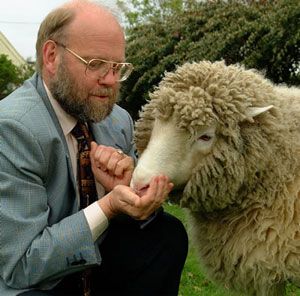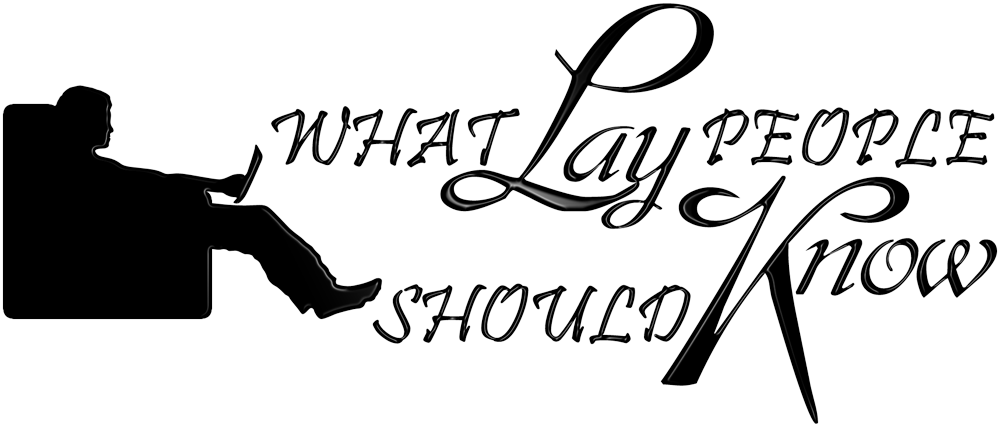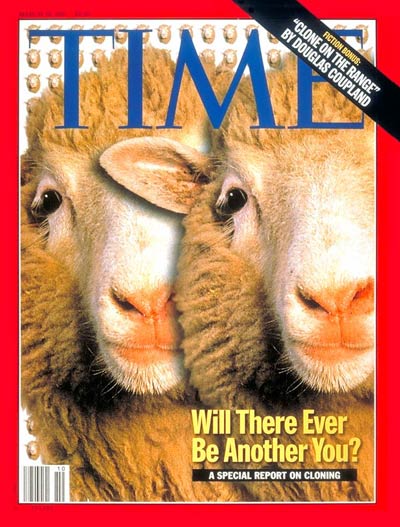by Zad Datu
Dolly the Sheep – one of the major accomplishments in biology – a celebrity in the subject of cloning, marking a spot in the calendar of the topic.
Before Dolly, the first image of cloning most would conjure upon in their minds is the science fiction model of cloning. The image of human duplicates processed through advance machines producing exact copies of a person – aside from personality, exact even to the point of their biological age, and often also knowledge and memory just as it is shown in Multiplicity (1996), The 6th Day (2000) and The Island (2005). I certainly hope that nobody nowadays still think that the actual current technology of cloning is anything like this.
With this model, the clones and the cloned will be more alike than identical twins are to each other – in actual cloning, the opposite is true. Clones are not exact copies of the cloned. Cloning is just the production of one’s twin born later in life. Natural twins are more likely to be brought up in the same lifetime, by the same parents and in the same lifestyle – unlikely in the case of clones with their clone donor – making twins more alike to each other than clones are to their clone donor. For twins and clones, the people (the bodies) are different, but their genetics (the information) are identical. Just like photocopies, the words (the information) are identical, but the papers (the bodies) are two different papers. In genetic terms, identical twins are clones of each other. But in fact, animal or human cloning will not produce a clone which is truly genetically identical to the cloned animal or human.
The usage of the term “clone” on animals was coined only in 1963. British-born Indian genetics and evolutionary biologist, John Burdon Sanderson Haldane, was credited for the coining in a speech titled Biological Possibilities for the Human Species of the Next Ten Thousand Years. It was not until then that the word “clone” has been used to describe such procedures. Before this, animal cloning was referred to as the fantastical experiment which was mentioned in Hans Spemann 1938 book titled Embryonic Development and Introduction, written over a decade before the first cloning and a decade after the first successful nuclear transfer experiment by Spemann himself.
The fantastical experiment deals with the removal of the nucleuses (enucleate) of fertilised ova (egg cells; ovum for singular) and transferring the nucleus (nuclear transfer) of cells that have specialised into specific types of cells (differentiated cells) into enucleated fertilised ova, then inserting into the wombs of a surrogate mother to give birth to live organisms. The first cloning in 1952 was exactly this, except that the cloned cells were undifferentiated embryo cells, performed on leopard king frog tadpoles by Robert William Briggs and Thomas Joseph King, both of whom at the time apparently and surprisingly weren’t aware of the fantastical experiment proposal.
Born on 5th July 1996, Dolly, a product of Ian Wilmut, Keith Campbell and other colleagues at the Roslin Institute in Edinburgh, Scotland, was not the first mammal to be cloned. Neither was she the first animal to be cloned, and certainly not the first organism. The first animal to be cloned was a tadpole in 1952 as just mentioned earlier, and the first mammal to be cloned was a sheep in 1984 by Steen Willadsen, neglecting the 1979 controversial claim of the cloning of a mice. What is fascinating about Dolly is that she was the first mammal, and also considered as the first animal to be cloned from an adult somatic cell, neglecting another controversial claim in 1962 of the cloning of tadpoles from adult cells. The method of cloning Dolly is called Somatic Cell Nuclear Transfer (SCNT). Somatic cells are differentiated body cells of a multicellular organism. These are cells other than gamete (or germline – cells which fuses during reproduction such as ova and sperm), germ cells (mother cells of gametes), and undifferentiated stem cells (undifferentiated cells that can divide and differentiate into specialised cells as well self renew to produce more stem cells).
 |
| Professor Ian Willmut and Dolly |
Ian Wilmut’s initial motive to clone a sheep was for a gene insertion project which he was working on, but when he heard of the 1986 cloning of cattle from differentiated embryo cells by Willdasen, he abandoned the project and switched to cloning entirely. Prior to Dolly, in 1995, he and his colleague, Keith Campbell, successfully cloned two sheep from differentiated embryo cells they named Megan and Morag. At this point, cloning is very limited as the material needed to clone an individual, the embryo, can only be obtained from the embryonic stage of the individual. The dream was to be able to clone an animal from materials available in adulthood – somatic cells. If this is to be possible, limitless number of clones can be produced.
From cloning Megan and Morag, they learnt that newly fertilised ova enters a phase of suspended animation as it coordinates the two sets of DNA, which they called Gap Zero (G0) stage. He believed and learnt that if DNA of the transplanted cell is not in the same stage of cycle as the ovum, cloning would be ineffective. To trick the cell into entering the G0 stage, they cell is starved. This would synchronise the cell’s cycles to the ovum allowing the ovum to take up the DNA of the transplanted cell. An electric current is then used to fuse the cell with the enucleated unfertilised ovum. This process proved successful on embryonic cells producing Megan and Morag, and with amazement, it was also successful on differentiated cells to produce Dolly.
Unfertilised ova were taken from Scottish black faced ewe, a different species of sheep from Dolly, then enucleated and placed next to the mammary gland cell from a Finn Doset sheep which was starved into G0 stage. Then within eight hours an electric current is used to fuse the two synchronised cells. Out of 277 mammary gland cells which underwent nuclear transfer, 29 of them developed into embryos which were placed in sheep oviducts for about a week before transferring each of them to the uteruses of Scottish blackface ewes as surrogate mothers. Only one embryo succeeded into pregnancy, and on 5th July 1996, the first animal to be cloned from an adult somatic cell was born – one species of sheep giving birth to a clone of another species.
Animals created using nuclear transfer cannot be a truly genetically identical clone of the donor animal as only the clone’s nuclear DNA is identical whereas the rest of the genetic material comes from the mitochondria in the cytoplasm of the enucleated ovum. This readdresses the issue that twins are more identical to each other than clones are to their genetic donor.
 |
| Rainbow (left) and CopyCat |
There even was a case in 2001 where the first cloning of a calico cat named Rainbow resulted in what seems to be another kind of cat, a tiger tabby, named CC for CopyCat or Carbon Copy. But they were genetically identical – aside from the genetic material from the mitochondria of the ovum donor. Calico cats and tiger tabbies are actually not different breeds of cats. A cat is considered a calico cat if its fur coat consists of a mixture of either black or brown with either red or orange and with the addition of white, while considered a tabby cat if the coat features distinctive stripes, dots or swirling patterns – in the case of CC, a brown tabby and white domestic shorthair, to be exact. The genes which are responsible for the orange colouring in cats are located in the X chromosomes. Rainbow had the combinations of brown, orange and white, and is a female hence having two X chromosomes. But during embryonic development of animals (human included), one of the X chromosomes will be randomly inactivated. In the case of CC, the inactivated X chromosome was the one which was responsible for to add orange colouring to her fur coat.
Since Dolly, many farm animals such sheep, cattle, pigs, goats, horses and deer, endangered species such as the gray wolf and gaur, and even pets such as cats and dogs, as well as one of the most popular animal guinea pig, the mice have been cloned. The early efforts in of using cloning technology for practical purposes were to mass produced clones of top breed farm animals. This was initiated by Grenada Genetics in 1985 that specialise in cattle, just immediate after Willdasen became part of shortly his success in cloning the first mammal. Several other biotechnology organisations rushed into the cloning business, hence the cloning industry erupted, and since then clones cattle and other farm animals have been mass produced from via embryo cells – until Dolly, that is.
Another main purpose behind developing techniques of reproductive cloning is to aid the genetic modification techniques of animals. To genetically modify an animal, external genes are first attached to a virus then inserted into, or directly inserted into the nucleus of an early embryonic stage of the animal. But the success rate of the animal integrating the added DNA to their genome is very low. With the aid of cloning, cloned embryos of a single animal can be cultured to the thousands, thus can be used as a control making more accurate studies on the techniques, as well as increase the number of experiments which can be carried out. A single animal with the desired traits can be accurately selected to be cloned in masses with the desired genetic modification.
Sheep Polly and Molly were the first genetically modified clones – a product of Wilmut and Campbell once again at the Roslin Institute in 1997 upon the Dolly success. Polly and Molly were grown from skin cells and were genetically modified to contain human genes. The human genes inserted were blood-clotting protein in which deficiency in this protein could cause haemophilia in people. With this genetic modification, Polly’s and Molly’s milk produces the therapeutic protein for humans with haemophilia. This process of genetic engineering animals to generate therapeutic protein within marketable food product such as meat, milk and egg whites is called pharming. The success of Polly and Molly sheds light on the further possibilities of pharming, as well engineering animals to produce organs transplantable to human.
Cloning applications for personal reasons, which many are under ethical questioning, includes the reproduction of deceased pets, and the production of genetically related child for married couples who have difficulties having children of their own artificial insemination and in vitro fertilisation. Artificial insemination and in vitro fertilisation may not be possible way to conceive for some couples perhaps to certain level of infertility or simply because they are gay or lesbian couples. The issue owners of deceased pets is that even though they have been told that cloned pets will not produce the same exact individual original pet, they still find it preferable to have a new pet very similar to their deceased pet rather than a completely different pet even though they are of the same breed. Aside from pets, there are parents with deceased children who wishes and are willing to take the necessary steps get their child back through cloning.
This marks the end of the article, but not the end of what you should know about cloning. The next article will dive into the other types of cloning. Types of cloning which doesn’t normally occur in one’s mind when the word “cloning” is mentioned – cloning not to produce fully grown organisms, cloning which existed in the ancient times, and cloning which pretty much doesn’t involve organisms. Then, unanswered questions on cloning such as “Is cloning playing god?”, “Is cloning dangerous?”, “Has human cloning been performed?”, “Is cloning or human cloning illegal, should it be illegal, and why?” and “Why is Hitler a popular topic in cloning?” shall be addressed in one more separate article.
Succeeding linked article – coming soon:
What Lay People Should Know about Cloning – Other Types of Cloning
What Lay People Should Know about Cloning – Fear Fuelled Objections (opinion) [Part 1] [Part 2]
What Lay People Should Know about Cloning – Ethical and Legal Issues (technical) [Part 1] [Part 2] [Part 3]
|
|
|
| Tweet |
|


